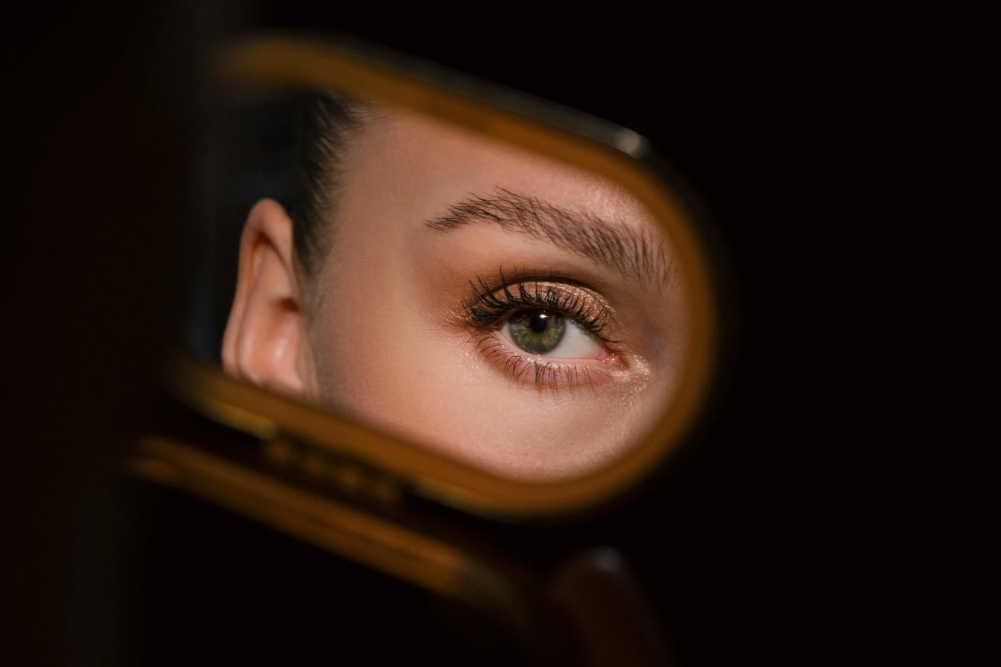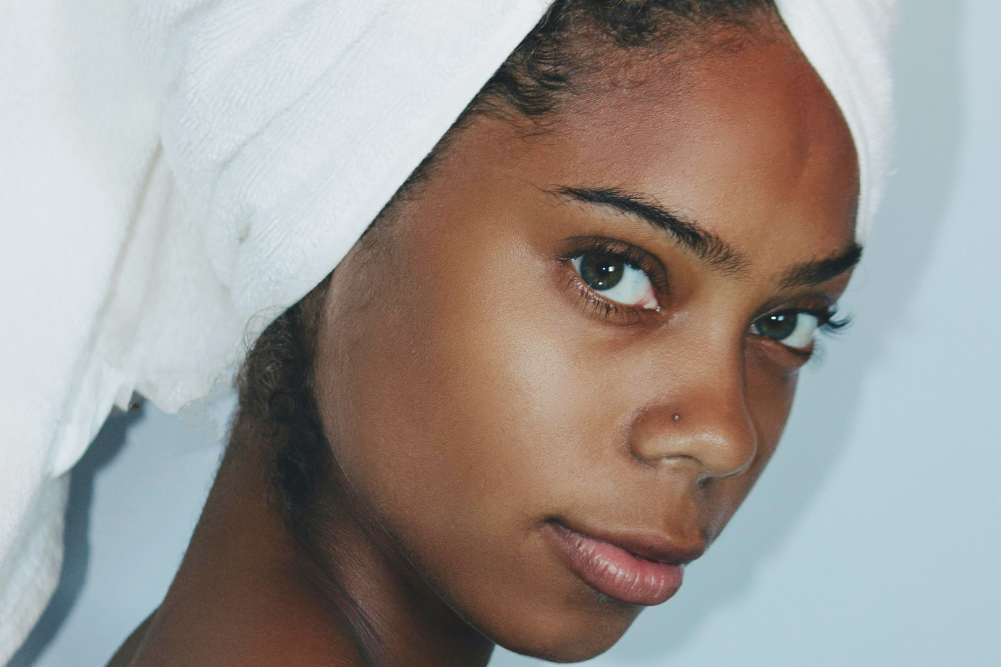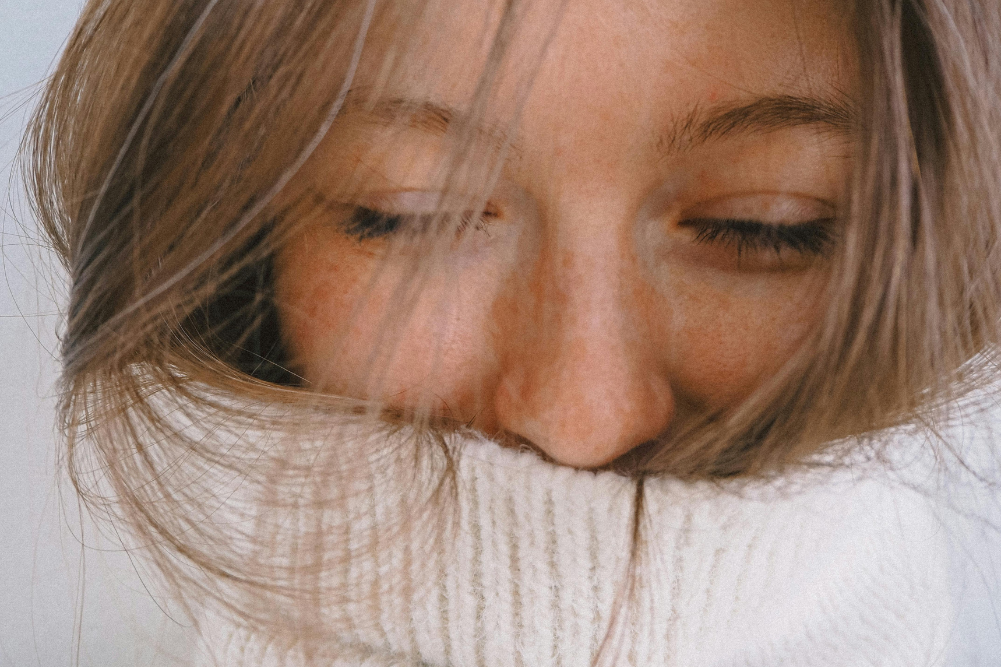Lip service
While we focus on the wellbeing of our skin, it’s easy to forget that our lips experience the hardest workout. Not only do they frame every word we speak, embrace every mouthful we take and bestow every kiss we make, but they help us express every emotion we feel. They are one of the most visible of all human organs and are biologically significant as a tactile sensory organ and an erogenous zone. Adding the fact that lips do not share the same natural protection as facial or body skin, there are plenty of good reasons why we should pay our puckers special respect and care.
Lips are composed of skin, muscle and mucosa without bones and or infrastructure, making them uniquely movable and pliable. However, far from a simple structure, they comprise a complex weave of nerve fibres, linked to the primary motor neocortex in the brain — the area of the brain that manages higher functions of sensory perception, generating motor commands, spatial reasoning and conscious thought and language. The human brain devotes an unusually large part of its surface area to our very important lips.
The skin of the lip is particularly thin, with only three to five cellular layers, compared to facial skin which boasts up to 16 layers. Light in colour, the skin on the lips lacks melanin, the natural pigmentation in skin that helps screen out UV rays. While this allows blood vessels to appear through the skin of the lips and give them their delicious red colour, it means lips can’t tan, they can only burn. With darker skin colour, lips carry some melanin, which makes them darker in colour, offering some protection.
To boot, the lips don’t have sweat glands or sebaceous glands and therefore lack the usual protection of sweat and body oil that keeps the skin hydrated and smooth, inhibits pathogens, provides some UV protection and regulates warmth. For these reasons, the lips dry out faster, become chapped and cracked more easily and are more prone to infection.
Protect and maintain
Although their physiology makes them vulnerable to the elements and therefore damage, there are many natural and effective ways of protecting and maintaining our lips so they stay smooth, soft and healthy.
The lips, like the rest of the skin, hair and nails, are the last to receive nutrients that go to more important organs first, making proper hydration, diet and exercise integral to the wellbeing of the lips. Lip chapping and cracking can be a result of a nutritional deficiency, notably riboflavin and other forms of vitamin B deficiency (yet an allergy to cobalt from taking B12 supplement can cause chapping of the lips, while too much vitamin A cause lips to peel, although in the correct amounts it’s very important for skin health), as well as iron and essential fatty acids. Zinc, magnesium, vitamin C and vitamin B6 are all important for the body to be able to utilise essential fatty acids properly.
Poor gut health can contribute to poor nutrient assimilation, a compromised immune system and therefore dry skin. Probiotics are healthy bacteria that promote gut health and boost immune health. Probiotic supplements can be taken, as well as prebiotic- and probiotic-rich foods.
General lifestyle factors, too, affect the wellbeing of the skin on your lips. Exercise helps skin and lip health by stimulating metabolism and promoting the efficient delivery of nutrients to all areas of the body; it also helps oxygenation, detoxification and cell turnover. Stress is infamous for robbing the skin of moisture and causing dryness so, whenever possible, relax.
Although tempting when lips are dry and cracked, licking your lips is counter-productive. There is a condition called lip licker’s dermatitis. Saliva contains the enzyme amylase that can damage the already compromised lip tissue. Avoiding flavoured lip products can help avoid the urge to lick your lips.
Dry air, cold temperatures and wind and sun all have a drying effect on skin as they draw moisture away from the body. Lips may become chapped as a result of such environmental assault or for a variety of other reasons such as allergic rhinitis (which can force you to breathe through your mouth and dry out the lips, especially when sleeping) and certain medications. Allergies and an illness can also be a trigger, making overall immune health vital for a healthy pout.
Periodontal disease is also a culprit for lip chapping, as can be contact allergies: reactions to ingredients in lip products, especially ingredients that are phototoxic. Acidic foods such as oranges can also irritate and dry out the lips. Scaling, or cracking in the angles of the lips, can be caused by a candida overgrowth. Your natural health practitioner can help with anti-candida remedies and diets.
Chapping, however, is generally caused by a lack of moisture, so replenishing your lips daily with a good natural lip balm or salve is very important for their maintenance and protection. It is a great preventative, best applied before going out into the elements; at home, especially when the heater is on; and, if you’re a mouth breather, to wear as a barrier at night time.
These topical applications provide the lips with moisture and fats they naturally lack. Emollients such as unrefined vegetable and nut oils are replete in nutrients, lipids and ceramides, natural fats and oils, essential fatty acids and protective plant chemicals that nourish and protect the skin on the lips. They also help lock in moisture and prevent surface evaporation.
Some, including jojoba oil, unrefined sesame oil, rice bran, macadamia nut oil, provide a level of protection from UV rays as well as being rich in antioxidants. Others help reduce free radical damage caused by UV rays with their antioxidant activity. These include olive oil, sea buckthorn berry oil, blackcurrant seed oil, soya bean oil, grapeseed oil, calendula-infused oil, sunflower oil, sweet almond oil and apricot kernel oil. Many of these are high in the potent antioxidant vitamin E.
Natural butters and waxes (the first lip balms were made from earwax) are also very helpful in moisturising, also providing some occlusion (helping stop moisture from escaping) without suffocating the skin, unlike mineral oil which can dry out the lips. These include beeswax, carnuba wax, cocoa butter and shea butter.
Jojoba oil, technically a wax, makes a superb lip ingredient as it is not only emollient but also a humectant which helps lock moisture within the skin’s layers. Vitamin E oil makes a valuable addition to lip balms for its antioxidant, moisturising and healing properties.
Other important additions to your lip applications are humectants and anti-oxidants. Humectants help draw moisture from the environment to keep the lips moisturised and plump. Effective humectants and conditioners include vegetable glycerine, honey, aloe vera, panthenol pro vitamin B5, minerals, mucopolysacharides (sugars found in plant cell walls: aloe vera and algae, for example), hyaluronic acid and phospholipids found in ingredients such as lecithin.
A mix of lipids, humectants and antioxidants in your topical lip products is the best way to keep your lips plump and succulent. Many mainstream plumping formulations contain ingredients that cause the lips to swell and become inflamed. This is not favourable, as consistent inflammation can lead to irritation, dryness, chapping and fissures.
Antioxidants such as grapeseed extract (which also helps reduce the loss of hyaluronic acid, one of the skin’s most important natural moisturisers and plumpers in the skin as we age), vitamins C and E, green tea, alpha lipoic acid and calendula help protect the skin against free radical damage and also have rejuvenating and healing properties. Certain ingredients such as vitamin C are purported to help synthesise collagen and plump up the lips. Amino acids found in wheat and soy proteins may help fill in the wrinkles on the lips and therefore give the appearance of plumper, fuller lips.
Under the sun
Sun protection is very important as the lips are constantly exposed to the sun’s rays, even when other parts of the body are clothed. Sun damage is a major cause of skin cancers and our lips are no exception. In fact they need more protection than other parts of our body, and lips rarely get the help from sunscreens that arms and legs do.
Lips need protection all year round. UV rays are always present, whether it’s December or July. Although the level of burning UVB rays declines substantially in cooler months, harmful UVA rays remain at relatively constant levels throughout the year. UV ray damage contributes to surface layer damage, breakdown of collagen and DNA damage. Even when lips show no physical sunburn, that doesn’t mean the underlying layers have not been damaged. Look for natural sunblocks in formulations such as zinc oxide, which offers natural protection from both UVA and UVB rays.
Remember that whatever you put on your lips you are bound to eat some of it off, so it makes sense to seek out lip products that are free of nasty chemicals. Many of these harsh and synthetic chemicals can also irritate and dry out the lips, leading to dryness and chapping, and some of the worst ingredients are sunscreen chemicals.
As an organ of the body, the lips can be a focus of disease or show symptoms of a disease. Hypothyroidism and auto-immune problems can cause lip disease, as can psoriasis, which develops on the lips in a thick crust. Lip herpes (technically Herpes labialis) is a form of herpes simplex, a viral infection which appears in the formation of painful blisters at the lip. It is also commonly known as cold sores. Once you’ve had an episode of cold sores, the virus lies dormant in the nerve cells of the skin and cold sores may reappear near the original site.
Outbreaks frequently occur following sun exposure, trauma, stress or menstruation and are highly contagious. Approximately 80 per cent of the population have had them and a third experience recurrent symptoms. Signs and symptoms include tingling, burning or itching prior to the cold sore developing. Small, fluid-filled blisters appear on or around the lips. If untreated they’ll generally last between 10 and 14 days but you can take steps to reduce their frequency, such as wearing protective balm with SPF, keeping your immune system strong and stress levels down, and being gentle with your lips — no rigorous exfoliation.
L-lysine is one of the eight essential amino acids and research shows it can help heal cold sores. It helps maintain and repair connective tissue (and is essential in the production of the skin’s building block collagen), boost the body’s immune response and promote skin and lip health. Certain foods have high levels of this amino acid, which must be obtained from the diet or supplement: meat, fish, milk, cheese, eggs and certain vegetables such as beans and potatoes. It may also help cold sores when applied topically. Amino acids are generally important for the building and maintenance of skin cells.
Oral care is very important for the health of your lips. Healthy gums and teeth will help support the wellbeing of your puckers. Wash your mouth regularly with a probiotic formulation to encourage beneficial flora.
Because of their high amounts of nerve endings and lack of covering, lips are highly sensitive and an erogenous zone. This may be the biological reason the brain gives so much of its energy to the lips. A woman’s lips are said to be a visible expression of her fertility. Studies show that the more oestrogen a woman has in her cycle, the fuller her lips will be at that time, which would make sense as oestrogen levels rise at the time of ovulation.
Looking after the skin on your lips with a balanced diet and nutritious balms will help keep them plump and smooth. To cheat, lip gloss makes the lips look fuller, especially a dab in the middle of your bottom lip. However, it does attract the sun to your lips, so make sure you layer first with your lipid-rich balm and SPF before applying the lip gloss. Enjoy!
What to avoid
Here are some common ingredients that can irritate the lips:
- Propyl gallate in lipstick may cause a contact allergy.
- Toothpaste that contains guaiazulene.
- Sodium lauryl sulphate.
- The juice from citrus fruits, which can cause both irritation as well as a phototoxic reaction that looks like chapped lips.
- Eating figs can result in phototoxicity.
- An ingredient known as phenyl salicylate (salol) used in lip-care products.
- An allergy to red dyes in candy mouthwash and toothpaste.
- Cinnamates, in candy, mouthwash toothpaste and sunscreen.
Lip remedies
Lip exfoliant
To keep your lips in good shape, exfoliate regularly and gently with a soft children’s toothbrush or damp flannel.
Refining and softening yoghurt and papaya lip mask
Mix live organic yoghurt and mashed papaya and smooth over lips. The lactic acid and probiotic bacteria in the yoghurt will hydrate, soften and enhance lip health while the enzymes in papaya will help smooth and refine the lips.
Hydrating compress
For chapped lips, use a cool saltwater compress daily: one tsp of Celtic Sea Salt to one pint water. Soak a washcloth in the solution and lay it over your lips. Keep it cool and moist for a while, then pat dry. Apply a lip balm afterwards.
Honey
Honey is anti-bacterial and healing. To smooth the lips, layer resinous honey over them and leave for 15 minutes or longer.
Aloe vera gel
Fresh aloe vera gel over the lips helps hydrate, soften and plump the lips.
Linoleic acid mask
Linoleic acid can be derived from numerous plant sources including evening primrose oil, sunflower oil or borage oil. These contain omega 6 essential fatty acids with healing and anti-inflammatory properties.
Simple protective lip gloss
10g beeswax
65ml jojoba oil
Method: Melt the beeswax and oil in a pyrex glass jar, in a pot of boiling water on the stove. Once melted, stir well and pour into little lip jars or desired containers. Brush on with a lip brush.
The ultimate lip balm
Full of anti-oxidants, fatty acids, and protective plant chemicals
10g beeswax
8g cocoa butter
20mL rice bran oil
10mL jojoba oil
10ml calendula-infused oil
10mL vitamin E oil
½ tsp honey
5 drops peppermint
Method: As above, only add the peppermint after the ingredients have melted.
Natural cold sore treatment
5 drops geranium
5 drops lavender
5 drops tea tree
1 tbsp myrrh tincture
Method: Mix together and store in an amber bottle. To use, apply the preparation to cold sores sparingly throughout the day.
Ruby lip and cheek colour
Beetroot crystals dissolved in some water can give you a lovely ruby colour.







